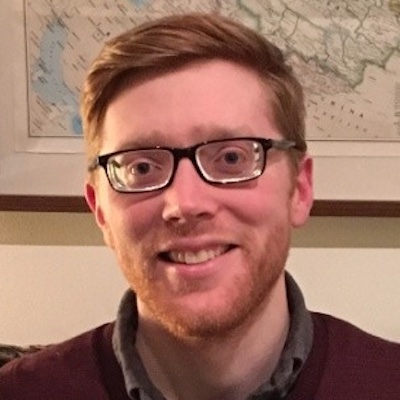Seminar Date: Tuesday, February 6, 2024
Time: 11:00 am
Location: 67-3111 & Zoom
Talk Title: Accelerating 2D Materials Synthesis, Heterostructure Assembly, and Characterization
Zoom Link

Bio:
Andrew J. Mannix is an assistant professor of Materials Science and Engineering at Stanford University. He completed his B.S. in Materials Science and Engineering at the University of Illinois at Urbana-Champaign, and his Ph.D. in Materials Science and Engineering at Northwestern University as an NSF GRFP Fellow, where he worked on the growth and atomic-scale characterization of new 2D materials. Before moving to Stanford, Andy was a Kadanoff-Rice Postdoctoral Fellow in the James Franck Institute at the University of Chicago, where he developed new methods of atomically-thin nanomaterials growth, processing, and automated heterostructure assembly. His lab at Stanford focuses on the growth, assembly and atomic-scale characterization of 2D materials for new electronic and quantum information science applications.
Abstract:
Atomically thin two-dimensional (2D) materials are promising for semiconductor technologies because they exhibit superior charge transport and optical properties at nanometer feature sizes. Moreover, van der Waals heterostructures (vdWHS) assembled from 2D materials yield unprecedented atomic-scale control over their structure and properties. Despite widespread interest, there is still a pressing need for robust methods to synthesize 2D monolayers, multilayers, and vdWHS. In this presentation, I will share recent three advances in transition metal dichalcogenide (TMD) synthesis and vdWHS assembly:
(1.) Metal-organic chemical vapor deposition (MOCVD) is a frontrunner for industrial TMD synthesis, but requires complex equipment, limits precursor flexibility, and yields small grain sizes. We implemented a hybrid MOCVD technique using a combination of vapor-phase chalcogen and liquid-phase metal precursors to enable fast, high quality growth which is amenable to experimentation with new dopants and growth chemistries. Using hybrid MOCVD growth of WS2, we grow monolayers, multilayers, heterostructures and dopants using simple hardware, and identify novel etching mechanisms of salt-based growth promoters (NaCl, KOH, etc.) commonly used to boost grain size and growth rate.
(2.) VdWHS assembly is often a slow artisanal process that produces small, random samples. We developed Robotic 4D Pixel Assembly to enable rapid manufacturing of vdWHS. Using a high-vacuum robot to assemble prepatterned pixels made from 2D materials grown at the wafer scale, we fabricated vdW solids of up to 80 individual layers with pre-designed shapes, laterally/vertically programmed composition, and controlled interlayer twist. This enabled efficient spectroscopic assays of vdWHS and fabrication of twisted n-layer assemblies, where we observed atomic lattice relaxation of twisted 4-layer WS2 at unexpectedly high interlayer twist angles ≥ 4°.
(3.) Characterizing 2D films and heterostructures is a rate-limiting but indispensable step for guiding iterative improvements in material quality. We have developed two methods to enhance throughput and understanding of our materials. We use widefield hyperspectral reflectance microscopy, assisted by unsupervised machine learning, to rapidly assess the quality of synthesized 2D semiconductors, identify defective regions, and categorize heterostructures. In van der Waals heterostructures, we have also developed a technique to map the moiré superlattice (surface or sub-surface) and atomic lattice. This method, torsional force microscopy, can be implemented in-air with common AFM hardware.

